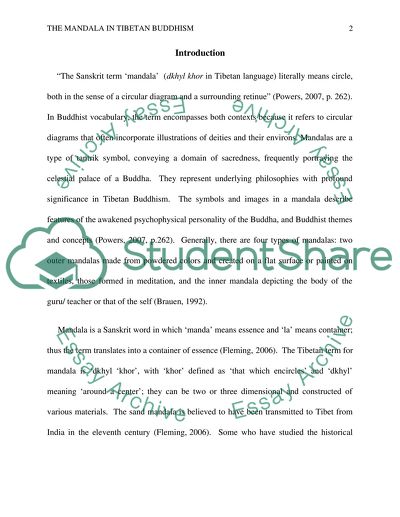Cite this document
(“The Mandala in Tibetan Buddhism Research Paper Example | Topics and Well Written Essays - 5000 words”, n.d.)
Retrieved from https://studentshare.org/religion-and-theology/1398940-the-mandala-in-tibetan-buddhism
Retrieved from https://studentshare.org/religion-and-theology/1398940-the-mandala-in-tibetan-buddhism
(The Mandala in Tibetan Buddhism Research Paper Example | Topics and Well Written Essays - 5000 Words)
https://studentshare.org/religion-and-theology/1398940-the-mandala-in-tibetan-buddhism.
https://studentshare.org/religion-and-theology/1398940-the-mandala-in-tibetan-buddhism.
“The Mandala in Tibetan Buddhism Research Paper Example | Topics and Well Written Essays - 5000 Words”, n.d. https://studentshare.org/religion-and-theology/1398940-the-mandala-in-tibetan-buddhism.


